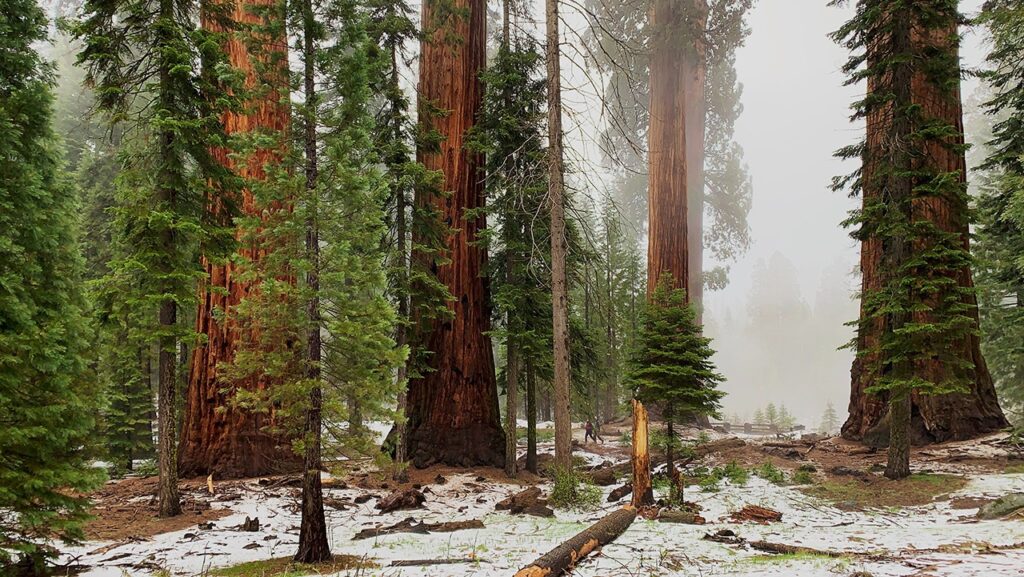
Giant sequoias, Seqoiadendron giganteum are among the largest trees in the world and are native to the western side of the Sierra Nevada Mountain range in California.
by John Bagnasco
They average 200’ to 275’ in height with a single trunk diameter of 15’ to 20’ and they can live for over 3,000 years. The General Sherman tree in the Sequoia National Park Is considered to be the largest living tree on the planet by volume. It is 275’ tall with a 25’ diameter trunk, and an estimated mass of 2,100 tons. The first branches start 130’ above the ground.
Did you know that this tree known for being synonymous with Californian forests grows in Michigan? The sequoia found its way there when it was planted in 1949 by Gertrude and Edward Gray. The couple brought back six sequoia seedlings from Northern California to Manistee, MI and three of those were able to survive. The trees have been able to not only survive, but also thrive, because of their proximity to Lake Michigan, which provides a natural insulation to keep the trees warm during the winter and cooler during the summer.
The trees are now happily growing in what has become the Lake Bluff Bird Sanctuary. Many bird species use the area for both nesting and migrating through the area. Bald Eagles, shorebirds, and migrating warblers can be seen on the many trails in the sanctuary. Because the sanctuary is situated in a major migratory flyway, the site is an ideal location for the Migration Celebration, one of several birding festivals throughout Michigan each year.
Giant sequoias are uniquely adapted to forest fires. The bark is unusually fire resistant and their cones will normally open immediately after a fire. Without fire, shade-loving species will crowd out young sequoia seedlings and sequoia seeds will not germinate. When fully grown, these trees typically require large amounts of water and are therefore often concentrated near streams. Squirrels, chipmunks, finches and sparrows can consume the freshly sprouted seedlings, preventing their establishment.
